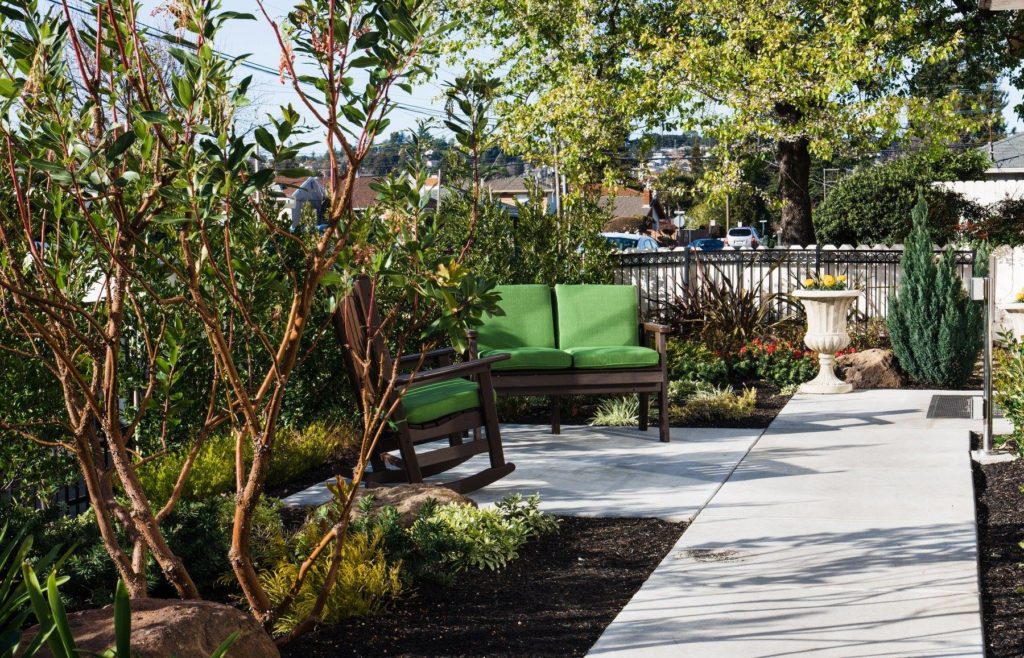Senior housing remains one of the most attractive development and investment opportunities in real estate, despite operational headwinds which have some proceeding with caution.
But that interest has observers concerned about new entrants entering the space without doing due diligence into the operational intensiveness of senior housing.
One California owner and operator, Carefield Living, was determined to take a different path.
Carefield studied the space for years before determining its entry and growth strategy, and now it is poised to expand its portfolio with a pipeline of new developments and acquisitions, CEO Steven Barklis told Senior Housing News.
The Solana Beach, California-based company has five communities in operation and another seven in development across the Golden State. Carefield’s core business revolves around assisted living. From that foundation, Carefield is adding independent living and memory care where needed, developing a pipeline for aging in place. It works with Northstar Senior Living as its operating partner.
“Our theory is the core of our business revolves around assisted living because people come [to senior living looking] for that particular need,” Barklis said.
Pivoting from hospitality
Barklis has nearly 40 years experience in commercial real estate and 20 years experience in asset management and hotel development — with a specific focus on extended stay hotel concepts operated by major hoteliers such as Marriott and Hilton.
Extended stay hotels are similar in size to the assisted living communities Barklis is building and renovating at Carefield. The two product types also share similarities in construction, design and plant make-ups. However, while extended stay hotels have these similarities to senior living, Barklis knew that he needed to perform extensive due diligence before diving into the sector.
He analyzed everything he could find about the industry: every decision made about development or care and the reasoning for those decisions. He sought out the opinions of experts who have been in the space longer to glean their knowledge and temper his point of view, gathered architects to gain their input on how they would approach community design.
“One of the things we found was everyone who came from a different business thought they can invent a better mousetrap,” Barklis said.
Barklis found that when stakeholders let down their guards and work collaboratively, the end result can be exciting. And he came to believe that Carefield could bring something fresh to the table. In particular, he thinks the industry does not pay as much attention to the resident experience as it should — at least compared to the hospitality industry. And he feels that senior housing design leaves a lot to be desired in terms of being more family friendly.
“We don’t want to be in a commodity business where a customer has to choose from similar product. If we don’t have something unique to bring to the space, then why get involved?” Barklis said.
Rapid expansion
Barklis launched Carefield through targeted acquisitions in suburban California markets where pro forma acquisition and renovation costs were much cheaper than ground-up development, and adding memory care where there was extra land to build. The company’s latest repositioning, a community in Salinas, California, cost $6.5 million to acquire and Carefield is spending an extra $6 million on renovations.
“At the end of the day, our basis is around $150,000 to $160,00 per unit, compared to new build costs in excess of $300,000 per unit,” Barklis said.
The biggest lesson Carefield learned about renovating older communities was working around the existing tenancy. As they improved on that front, they were able to keep residents happy and abreast of ongoing changes to renovation timetables. Occupancy rates for Carefield’s repositionings post-renovations are around 60%, and Barklis estimates the communities will be full within the next six to nine months.
Carefield’s ongoing acquisition program will buttress an aggressive development pipeline. Its ground-up communities will average around 100 units in a mix of assisted living and memory care, and Barklis has an eye toward future-proofing design, materials, the buildings’ physical plants and tech infrastructure so that they can accommodate the anticipated demands and needs of baby boomers when they eventually need assisted living services.
This is one area where Barklis’ hospitality background comes in handy, he told SHN. It gives Carefield experience in putting best practices in place for selecting the types of additions it considers, as well as price points.
“Those are tough considerations. We’re not flippers; we are building to hold,” he said.
With the due diligence out of the way, Carefield is eyeing a rapid expansion and is looking to grow its pipeline beyond the seven communities currently in development.
“We want to triple the portfolio as quickly as we can, without outrunning our cover as far as what we know how to do and how to do this logically,” Barklis said.
Carefield’s competition is not other providers, but seniors who are still in their homes, Barklis told SHN. By focusing on the resident experience, Carefield hopes to convince seniors to move out of their homes and into a Carefield property.
“If you aren’t creating an exciting environment that will get people out of their homes, then you won’t get them out of their houses. It better be a good experience for them to move in,” he said.


